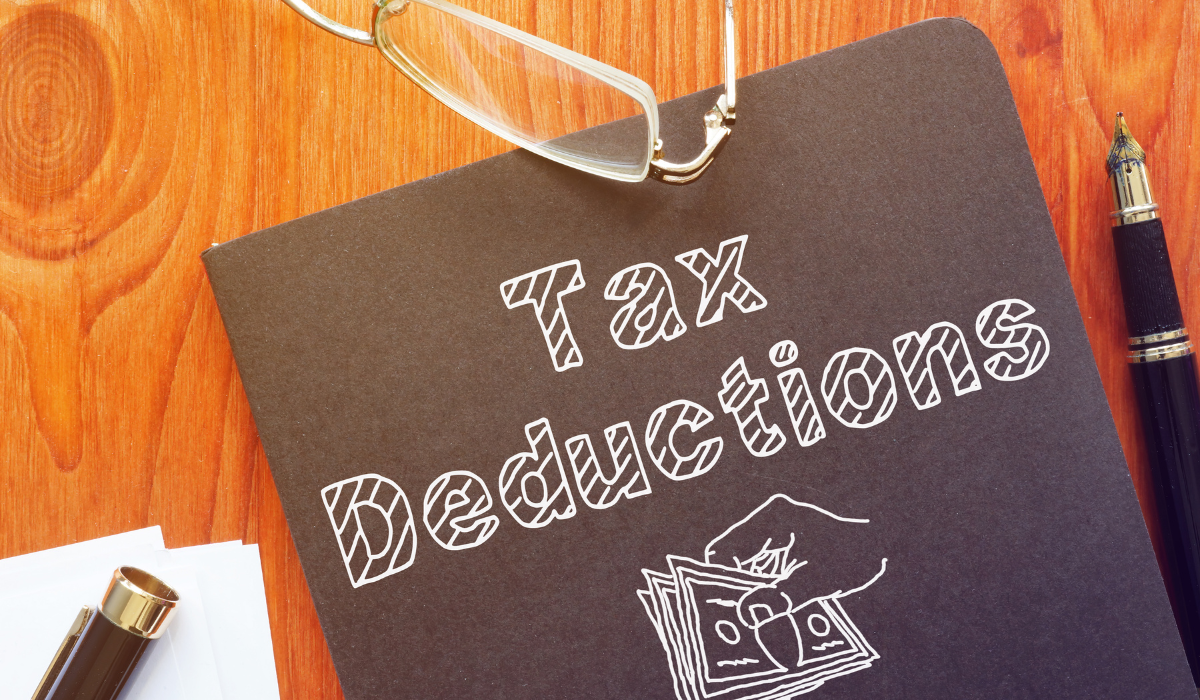Are you a property owner? Here’s a bit of good news for you: Just when bonus depreciation was set to drop to 40%, new legislation flipped the script.
The One Big Beautiful Bill Act (OBBBA), signed in July 2025, permanently restored 100% bonus depreciation for assets acquired after January 19, 2025. This is a major win for tax savings and cash flow.
From our experience, many real estate investor professionals are asking one crucial question: how does bonus depreciation work for real estate in light of these changes?
This guide breaks down the new bonus depreciation rules to help you secure immediate tax deductions and keep more money in your pocket.
This article expands on our previous discussion of accredited commercial depreciation tactics. In the next blog, we will focus specifically on the powerful combination of a cost segregation study and bonus depreciation.
For a comprehensive overview, be sure to read our post on bonus depreciation commercial real estate 2025.
Let’s start!
Short Summary
- Bonus depreciation now offers a permanent 100% deduction under OBBBA for qualified property acquired after January 20, 2025.
- Property qualifies when identified through a cost segregation study, including tangible personal property, land improvements, and qualified improvement property.
- Investors can increase tax savings with the right sequence of Section 179 expensing and bonus depreciation, maximizing immediate tax deductions.
- Advanced planning around capital expenditure timing, net operating loss management, and state conformity rules helps property owners balance their tax strategy.
- Working with a tax professional ensures each tax return is accurate and deductions are captured correctly.
What Is Bonus Depreciation And How OBBBA 2025 Updates Transform Real Estate Tax Strategy
Understanding how bonus depreciation works is easier when compared to the old way of spreading deductions out. Traditionally, real estate owners had to recover costs slowly across a long recovery period.
With bonus depreciation, you take an immediate tax deduction in the same tax year, which makes planning far more flexible.
Permanent 100% Write-Offs
The One Big Beautiful Bill Act (OBBBA) locked in a permanent 100% deduction for certain assets. Any qualified property acquired on or after January 20, 2025, qualifies for 100% bonus depreciation.
That’s not a short-term incentive. It’s an ongoing tax planning tool written directly into the internal revenue code.
Reversal Of The Phase-Out
The original Jobs Act put a phase-out in motion. By 2025, the bonus depreciation percentage was supposed to shrink to 40%. OBBBA canceled that slide and delivered an elimination of phase-out entirely.
For example, if a developer buys $2 million in machinery tied to a mixed-use project, the entire purchase can be deducted, rather than losing out to phased reductions.
New Property Classifications
The bill added a new class of nonresidential real property assets tied to manufacturing, also called Qualified Production Property (QPP). That means if a taxpayer begins building a production facility, equipment and certain improvements may qualify where they didn’t before.
For example, an investor converting a warehouse into a packaging facility can now apply these rules, provided the property acquired meets the criteria and the property qualifies under the definitions.
Why This Matters
For real estate owners and investors, this change creates immediate room for larger tax cuts. It’s no longer about waiting for small annual write-offs. Instead, planning acquisitions around these rules gives a clear path to maximize capital efficiency while reducing taxable income.
What Qualified Property Can Claim Bonus Depreciation In Real Estate Investments
If the law sounds generous, it’s because it is. But only certain assets qualify. Understanding what counts as qualified property makes the difference between a smooth deduction and a missed opportunity.
Tangible Personal Property
Most tangible personal property with a recovery period of 20 years or less qualifies. For example, a cost segregation study might identify furniture, fixtures, or security systems inside a building.
Those components can claim bonus depreciation, while the actual structure cannot.
Land And Building Improvements
Items like land improvements, i.e. parking lots, sidewalks, or landscaping, are eligible. So are qualified improvement property projects, which cover interior modifications to nonresidential real property.
For instance, reconfiguring office space inside a commercial building qualifies, while adding an exterior wall does not.
Residential And Commercial Assets
Residential rental property can also provide opportunities. If a landlord replaces appliances across several rental properties, those assets qualify as depreciable assets.
For example, a portfolio owner buying 100 new HVAC units may immediately deduct the cost, boosting cash flow. The same goes for commercial property owners who reclassify eligible components.
We Guide People How To Invest In Real Estate
Timing And Contract Rules
The rules emphasize when a property is placed in service. If the significant nature begins after January 20, 2025, the property qualifies. Binding contracts also matter.
For example, a project started under contract before the change may not count unless certain conditions are met.
Even self-constructed property like on-site improvements can qualify if tracked properly.
Utility And Specialized Property
Other categories include water utility property and certain specialty assets. While they’re less common, they can still provide meaningful deductions.
For example, a commercial developer who adds water pipelines to service a property can classify them as depreciable property and take the deduction in the same year.
The Bottom Line
Knowing which eligible property qualifies takes careful review. A solid cost segregation analysis can reveal value hiding in plain sight. Done correctly, these classifications allow investors to accelerate tax benefits while improving liquidity.
Step-By-Step Process: How Does Bonus Depreciation Work For Real Estate
Getting value from bonus depreciation isn’t complicated once the steps are clear. Think of it as a checklist that moves from identifying assets to reporting on your federal tax return.
Step 1. Identify Qualifying Assets
A cost segregation study is the first step. This process breaks down a building into components, separating qualifying assets like lighting, appliances, and fixtures from non-qualifying structural parts.
For example, a hotel purchase may reveal thousands of dollars in tangible property that can claim immediate tax deductions instead of being spread out over decades.
Step 2. Calculate The Deduction
Once you know the assets, you calculate the deduction based on the purchase price. The bonus depreciation based amount is tied to the cost of eligible assets.
For example, a $5 million commercial purchase could reveal $1.2 million in qualifying systems that are deductible in the same taxable year.
Step 3. Sequence with Section 179
Strategic timing matters. Many investors choose to use Section 179 expensing before bonus depreciation. This sequence ensures you get the maximum deduction while still protecting against limits tied to ordinary income.
For instance, applying Section 179 to new office furniture and then using bonus depreciation on HVAC upgrades can balance the impact on tax liability.
Step 4. Report Correctly
Finally, file everything on your income tax return. Working with a qualified tax professional ensures all the details are right. For example, failing to properly list an asset class could delay or reduce benefits.
Filing errors not only affect deductions but may reduce your ability to offset income in later years.
Advanced Tax Planning Strategies To Maximize Real Estate Bonus Depreciation Benefits
Once the basics are in place, bonus depreciation becomes a tool for shaping strategy. The right approach helps property owners manage taxes, spending, and future planning.
Time Capital Expenditures
Coordinating bonus depreciation with capital expenditure decisions can unlock major tax benefits. For example, upgrading building systems late in the year can improve cash flow while cutting the tax burden for that year.
Investors who stagger upgrades can spread tax savings over multiple properties without straining liquidity.
Manage Net Operating Losses
Bonus depreciation can create or expand a net operating loss. Smart planning balances this against taxable income across years. For example, if one building produces a large deduction, you can carry the loss forward to reduce taxes on future projects.
Combine With Other Relief Strategies
Integrating accelerated depreciation with other forms of tax relief creates even greater flexibility. Property owners can align deductions with financing decisions.
Securing long-term debt while booking large deductions, for instance, improves both reported profit and cash flow. This result gives property managers breathing room.
Account For State Rules
State rules don’t always line up with federal standards. Some states won’t honor the full deduction, requiring adjustments. California, for example, requires slower depreciation methods.
If you don’t want surprises later at filing, make sure to keep state conformity in mind to help your long-term planning.
Think Long-Term
The benefit of first year bonus depreciation is clear, but what can bring it all together is planning ahead. Investors who map purchases across tax years can keep increased cash flow steady.
For example, when a taxpayer produces property across multiple states, aligning deductions with development schedules can support sustainable growth rather than one-time relief.
Final Thoughts
Real estate bonus depreciation has turned into a powerful tool for property owners looking to lower tax bills and boost cash flow. With the right approach to tax planning, investors can secure immediate tax deductions and create meaningful tax savings year after year.
A trusted tax professional can help make sure every tax return is filed correctly and every opportunity is captured. Smart moves now set the stage for stronger investments tomorrow.
For more insights and resources, explore our homepage and see how we can help you plan ahead with confidence.






